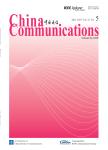版权所有:内蒙古大学图书馆 技术提供:维普资讯• 智图
内蒙古自治区呼和浩特市赛罕区大学西街235号 邮编: 010021

作者机构:Department of Electrical and Computer Engineering Sungkyunkwan University Department of Telecommunication Engineering FICT Balochistan University of Information Technology Engineering and Management Sciences Mobile Access Research Division Electronics and Telecommunications Research Institute
出 版 物:《China Communications》 (中国通信(英文版))
年 卷 期:2018年第15卷第12期
页 面:159-173页
核心收录:
学科分类:0809[工学-电子科学与技术(可授工学、理学学位)] 08[工学]
基 金:supported by Institute for Information and communications Technology Promotion(IITP)grant funded by the Korea government(MSIP)(No.R0101-15-244 Development of 5G Mobile Communication Technologies for Hyperconnected smart services)
主 题:heterogeneous networks moving small cells fixed small cells moving cache network performance evaluation next generation networks
摘 要:Recent years have witnessed a huge demand for ubiquitous communications services from continuously moving users. In order to provide seamless network services to high-mobility users, one of the promising solution proposed by 3 GPP is the deployment of moving-relays. In this article, we introduce the concept of Moving-Personal-Cell(mPC), which is a type of moving-relays. mPC is a user-centric network, which aims to provide reliable network services to moving users. A mPC receives data-traffic from eNB and its neighboring mPCs via wireless backhaul and sidehual links respectively and forwards the received data to its serving users. In addition to this, mPC can also increase the network capacity by caching and distributing the popular contents to its serving users. Besides these pros, the mPC also has some limitations, as its performance is highly affected by cross-tier and co-tier interferences. In this article, we analyze the effect of these interferences on mPCs performance. Our results show that the performance of mPC network is equally affected by the capacity of wireless backhaul, sidehaul, and access links. Moreover, since mPCs accommodate data traffic from wireless backhaul, sidehaul links, and content cache, their performance is also affected by the ratio of data-traffic delivered via these links.